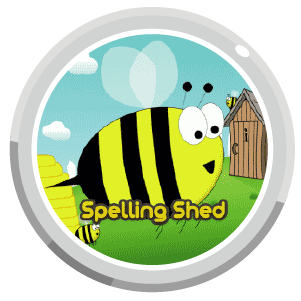At Staunton and Corse Academy, we believe that the ability to read, write and verbally communicate is fundamental to our pupils succeeding in life: enabling them to access the next phase of their education and beyond.
We strive to create independent, enthusiastic and lifelong readers and writers.
Our English reading and writing curriculum in KS1 and KS2 at Staunton and Corse Primary Academy follows the National Curriculum objectives progressively, and it is our aim that children master the knowledge and skills detailed in the National Curriculum by the end of Year 6.
Our daily phonics approach in the EYFS, KS1, and KS2 makes sure that our children have the decoding abilities necessary to become proficient and fluent readers.
We use a range of exciting, high-quality, and ambitious, diverse texts that are the vehicle to nurture a love of reading and foster children’s reading for pleasure. We encourage the children to seek out an ever-widening vocabulary in their spoken and written language, which is enriched through the texts they read and study.
Our high-quality, captivating, and engaging text-driven English curriculum has been designed to ensure that pupils develop a love of reading and writing. Our curriculum covers a variety of genres, and there are plentiful opportunities for children to write with enthusiasm for a range of audiences and purposes across the curriculum, achieving their full potential as writers.
We run parent information sessions on phonics and reading for reception parents, curriculum evening for all parents, and a SATs meeting for Year 6 parents so that they understand age-related expectations. These sessions are always very well attended by parents and carers, who often comment about how helpful the sessions have been for them.
Handwriting
At Staunton and Corse Academy Primary School, we are very proud of our pupil’s handwriting and take particular care in our cursive/joined-up handwriting style. We use Letter-join as the basis of our handwriting policy that covers all the requirements of the 2014 National Curriculum.
We us 'nip, flip, grip' to teach our children in EYFS how to use a tripod grip. We also practice incorrect letter formation daily in writing books to practice correct letter formation and pencil grip. The children are shown the correct formation and where to start in a yellow pen. They will go over this three times and then independently three times.
Handwriting is a basic skill that influences the quality of work throughout the curriculum. At the end of Key Stage 2, all pupils should have the ability to produce fluent, legible, and, eventually, speedy joined-up handwriting and to understand the different forms of handwriting used for different purposes.
We aim to make handwriting an automatic process that does not interfere with creative and mental thinking.
As a catalyst to speedy handwriting, we encourage parents and carers to use the Letter-join resources at home and can arrange for free access to the Home Edition of Letter-join. Please view our handwriting handbook here.
Spelling
This follows on from our phonics work using the robust and accredited 'Unlocking Letters and Sounds' scheme. The children are taught to read and spell age-appropriate words from the National Curriculum and are tested on these each week. These structured spelling sessions, which take place three times a week, include handwriting, revision of previous spelling patterns, and the spelling and understanding of new words and spelling patterns. We use Spelling Shed across the school, with each child having their own log-in. Here, the children can practice the spelling focus for the week as well as play games to strengthen their spelling and understand rules and patterns. Children are encouraged to log in at home but are also given the opportunity to use school iPads to access their accounts. Please see our Phonics page for information about how we teach phonics.
Please view our Handwriting Handbook here.
Please view our Writing Intent, Implementation and Impact Statement here.
Please view our Progression of skills for reading, writing and spelling here

















